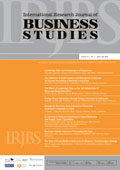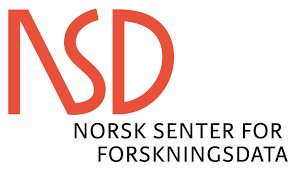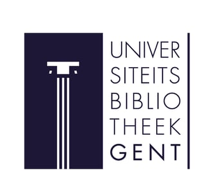Article Metrics |
|
|
Challenges of Working From Home in Persistent Covid-19 Environment
Abstract
The IT sector is one of the important sectors that contribute to the growth of Indian economy. The Industry adopted many measures to achieve a higher level of performance and to sustain their higher market share; one of such measures is working from Home (WFH). The Covid-19 pandemic badly affected the world economy. Therefore, to sustain the work progress the IT firms across the glove have adopted WFH method. Though there are many studies conducted to identify the challenges of working from home in the early stage of the covid-19. But, there are scant studies those who made attempt to identify the challenges of working from home and changes in these challenges in the persistent covid-19 environment. In the present study it is found that, there are seven challenges remain same as in the early stage of pandemic and eight previously identified challenges have changed into moderate challenges.
Full Text:
References
Ammons, S. K., & Markham, W. T. (2004). Working at home: Experiences of skilled white collar workers. Sociological Spectrum, 24(2), 191–238.
Bailey, D. E., & Kurland, N. B. (2002). A review of telework research: Findings, new directions, and lessons for the study of modern work. Journal of Organizational Behavior: The International Journal of Industrial, Occupational and Organizational Psychology and Behavior, 23(4), 383–400.
Baruch, Y. (2000). Teleworking: Benefits and pitfalls as perceived by professionals and managers. New Technology, Work and Employment, 15(1), 34–49.
Blake, K. D., Blendon, R. J., & Viswanath, K. (2010). Employment and compliance with pandemic influenza mitigation recommendations. Emerging Infectious Diseases, 16(2), 212.
Butler, J., & Jaffe, S. (2021). Challenges and gratitude: A diary study of software engineers working from home during covid-19 pandemic. 2021 IEEE/ACM 43rd International Conference on Software Engineering: Software Engineering in Practice (ICSE-SEIP), 362–363.
Cascio, W. F. (2000). Managing a virtual workplace. Academy of Management Perspectives, 14(3), 81–90.
Chung, H., Seo, H., Forbes, S., & Birkett, H. (2020). Working from home during the COVID-19 lockdown: Changing preferences and the future of work.
Cooper, C. D., & Kurland, N. B. (2002). Telecommuting, professional isolation, and employee development in public and private organizations. Journal of Organizational Behavior: The International Journal of Industrial, Occupational and Organizational Psychology and Behavior, 23(4), 511–532.
Cortina J M (1993), “What is Coefficient Alpha? An Examination of Theory and Applications”, Journal of Applied Psychology, Vol. 78, No. 1, pp. 98-104.
Davenport, T. H., & Pearlson, K. (1998). Two cheers for the virtual office. MIT Sloan Management Review, 39(4), 51.
Donnelly, N., & Proctor-Thomson, S. B. (2015). Disrupted work: Home-based teleworking (HbTW) in the aftermath of a natural disaster. New Technology, Work and Employment, 30(1), 47–61.
Dingel, J., & Neiman, B. (2020). How Many Jobs Can Be Done at Home?: NBER Working Paper No. 26948.
Duffy, C. (2020). Big tech firms ramp up remote working orders to prevent coronavirus spread. URL Https://Www. Cnn. Com/2020/03/10/Tech/Google Work-from-Home-Coronavirus/Index. Html.
Feng, Y., & Zhou, W. (2020). Is working from home the new norm? An observational study based on a large geo-tagged covid-19 twitter dataset. ArXiv Preprint ArXiv:2006.08581.
Ford, D., Storey, M.-A., Zimmermann, T., Bird, C., Jaffe, S., Maddila, C., Butler, J. L., Houck, B., & Nagappan, N. (2020). A tale of two cities: Software developers working from home during the covid-19 pandemic. ArXiv Preprint ArXiv:2008.11147.
Gorlick, A. (2020). The productivity pitfalls of working from home in the age of COVID-19. Stanford News. March, 30, 2020.
Gottlieb, C., Grobovšek, J., & Poschke, M. (2020). Working from home across countries. Covid Economics, 1(8), 71–91.
George, D., & Mallery, P (2003), ‘SPSS for Windows step by step: A simple guide and reference’, (4th ed.), Boston: Allyn & Bacon.
Gurstein, P. (2001). Wired to the world, chained to the home: Telework in daily life. UBC Press.
Hern, A. (2020). Covid-19 could cause permanent shift towards home working. The Guardian, 13.
Johnson, L. C., Andrey, J., & Shaw, S. M. (2007). Mr. Dithers comes to dinner: Telework and the merging of women’s work and home domains in
Canada. Gender, Place & Culture, 14(2), 141–161.
Lapierre, L. M., Van Steenbergen, E. F., Peeters, M. C., & Kluwer, E. S. (2016). Juggling work and family responsibilities when involuntarily working more from home: A multiwave study of financial sales professionals. Journal of Organizational Behavior, 37(6), 804–822.
Malik, M. H., & Velan, N. (2016). Trends and determinants of IT-BPM exports in India. Journal of Science and Technology Policy Management.
Morgan, R. E. (2004). Teleworking: An assessment of the benefits and challenges. European Business Review.
NASSCOM (2020), Navigating Covid, Retrieved from the NASSCOM website https://nasscom.in/knowledge-center/publications/navigating-covid-indian-tech-sector-benchmarks-and-way-forward
NASSCOM (2020), CEO pulse review. Retrieved from the NASSCOM website https://nasscom.in/knowledge-center/publications/ceo-pulse-review-covid-19-impact-indian-tech-sector-june-2020
NASSCOM(2019),AnnualReport. Retrieved from NASSCOM website https://nasscom.in/sites/default/files/Annual_Report_2019.pdf
Nilles, J. M. (1997). Telework: Enabling distributed organizations: implications for IT managers. Information Systems Management, 14(4), 7–14.
Pérez, M. P., Sánchez, A. M., de Luis Carnicer, P., & Jiménez, M. J. V. (2004). A technology acceptance model of innovation adoption: The case of teleworking. European Journal of Innovation Management.
Prasad, D. K., Rao, M., Vaidya, D. R., & Muralidhar, B. (2020). Organizational climate, opportunities, challenges and psychological wellbeing of the remote working employees during COVID-19 pandemic: A general linear model approach with reference to information technology industry in hyderabad. International Journal of Advanced Research in Engineering and Technology (IJARET), 11(4).
Raišienė, A. G., Rapuano, V., Varkulevičiūtė, K., & Stachová, K. (2020). Working from Home—Who is Happy? A Survey of Lithuania’s employees during the COVID-19 quarantine period. Sustainability, 12(13), 5332.
Ralph, P., Baltes, S., Adisaputri, G., Torkar, R., Kovalenko, V., Kalinowski, M., Novielli, N., Yoo, S., Devroey, X., & Tan, X. (2020). Pandemic programming. Empirical Software Engineering, 25(6), 4927–4961.
Ralph, P., & Tempero, E. (2018). Construct validity in software engineering research and software metrics. Proceedings of the 22nd International Conference on Evaluation and Assessment in Software Engineering 2018, 13–23.
Taha, S., Matheson, K., Cronin, T., & Anisman, H. (2014). Intolerance of uncertainty, appraisals, coping, and anxiety: The case of the 2009 H 1 N 1 pandemic. British Journal of Health Psychology, 19(3), 592–605.
WHO Coronavirus (Covid-19) Dashboard(2021). Retrieved from https://covid-19.who.int
Wilson, M., & Greenhill, A. (2004). Gender and teleworking identities in the risk society: A research agenda. New Technology, Work and Employment, 19(3), 207–221.
Copyright (c) 2021 INTERNATIONAL RESEARCH JOURNAL OF BUSINESS STUDIES
International Research Journal of Business Studies has been covered by the following services: | ||||||||||||||||||||||||
|




















